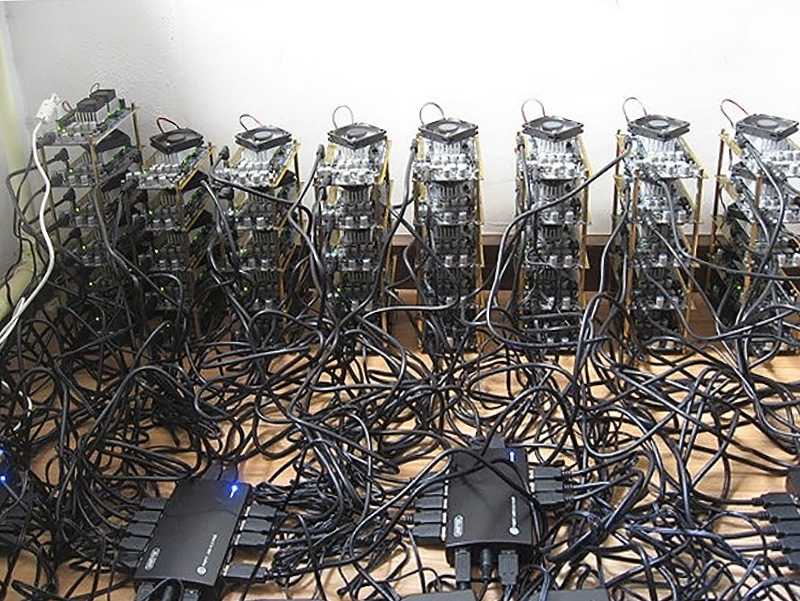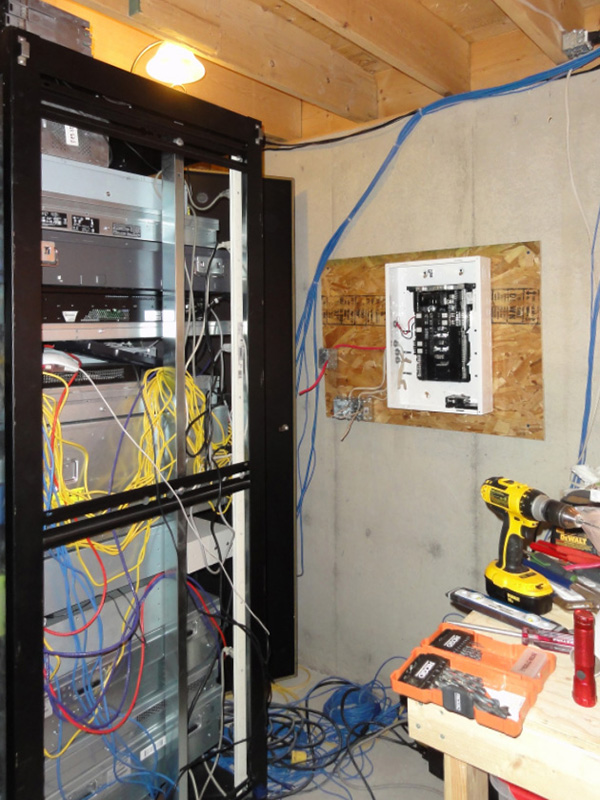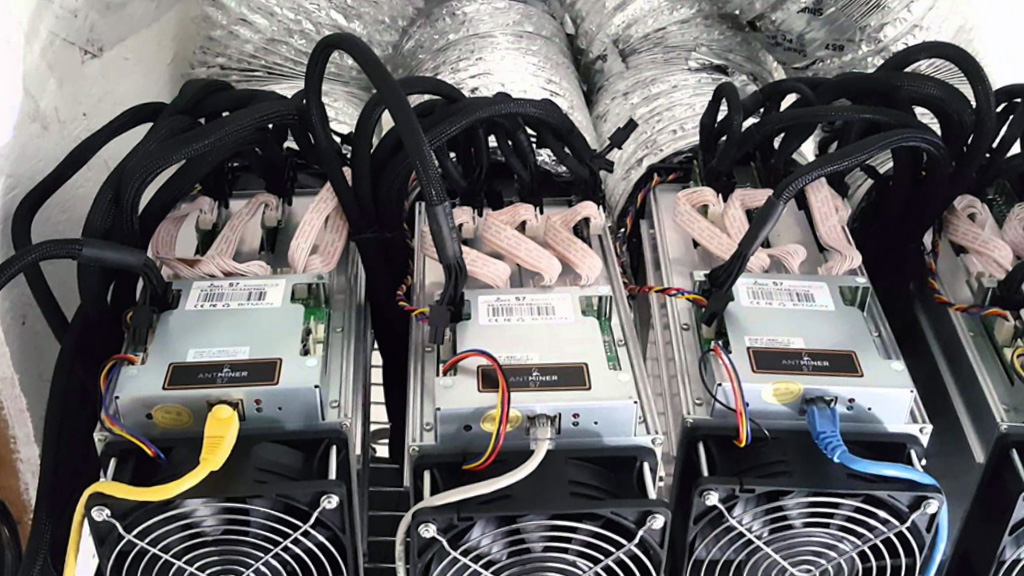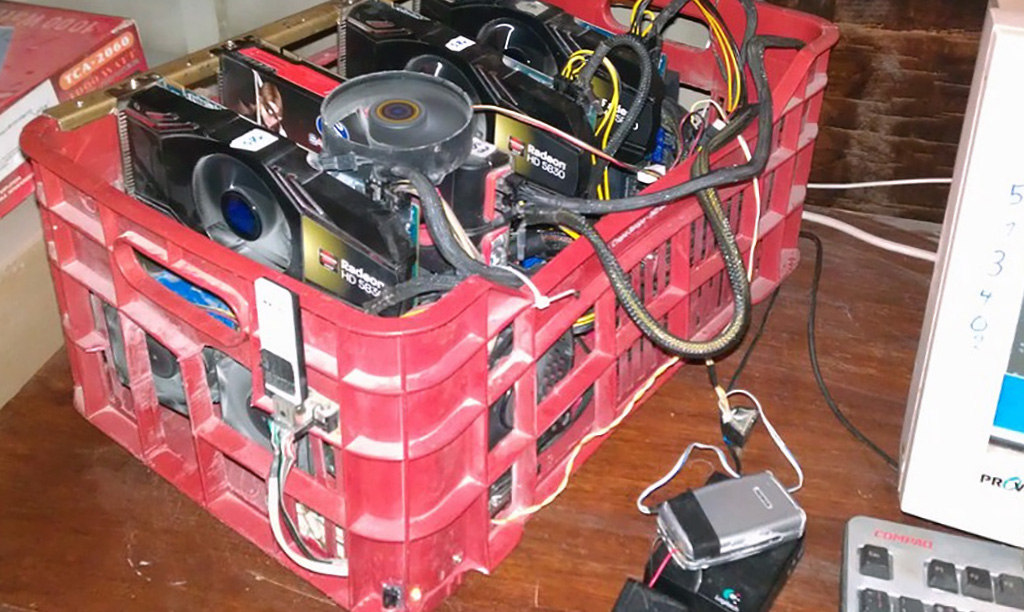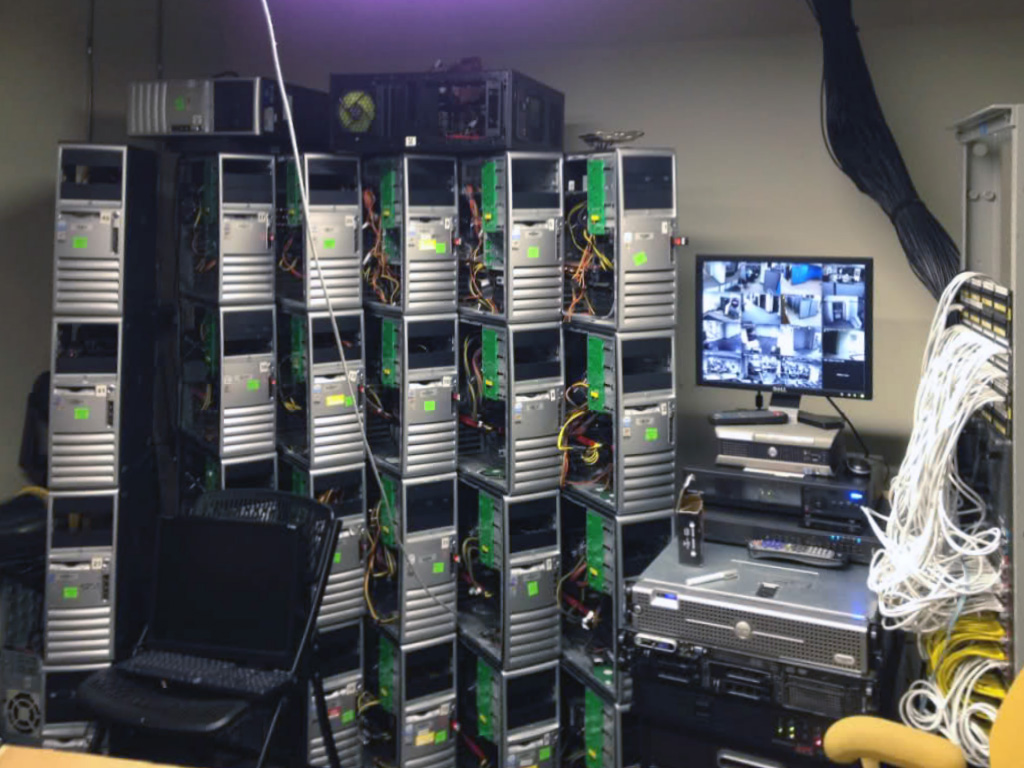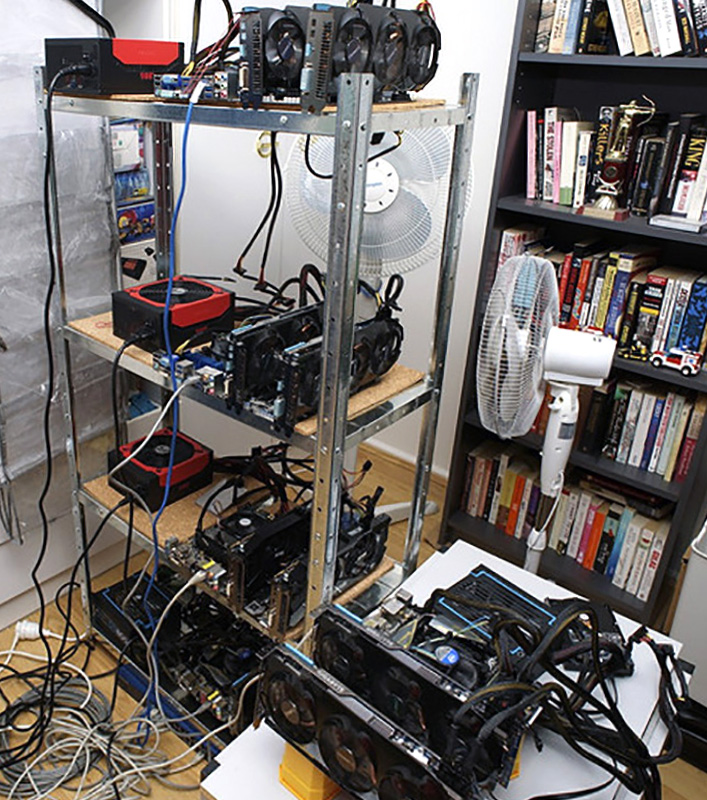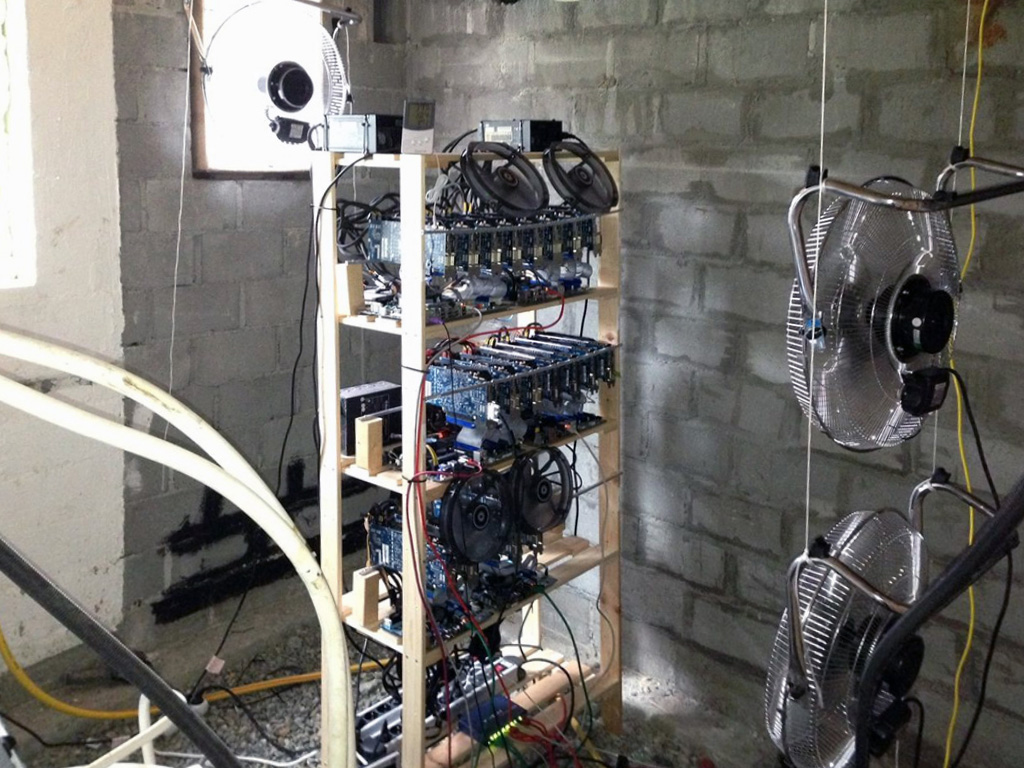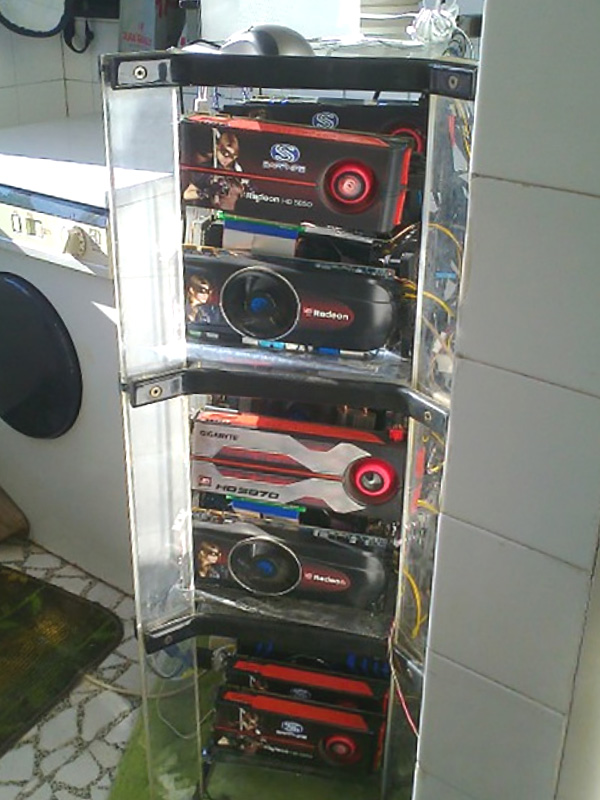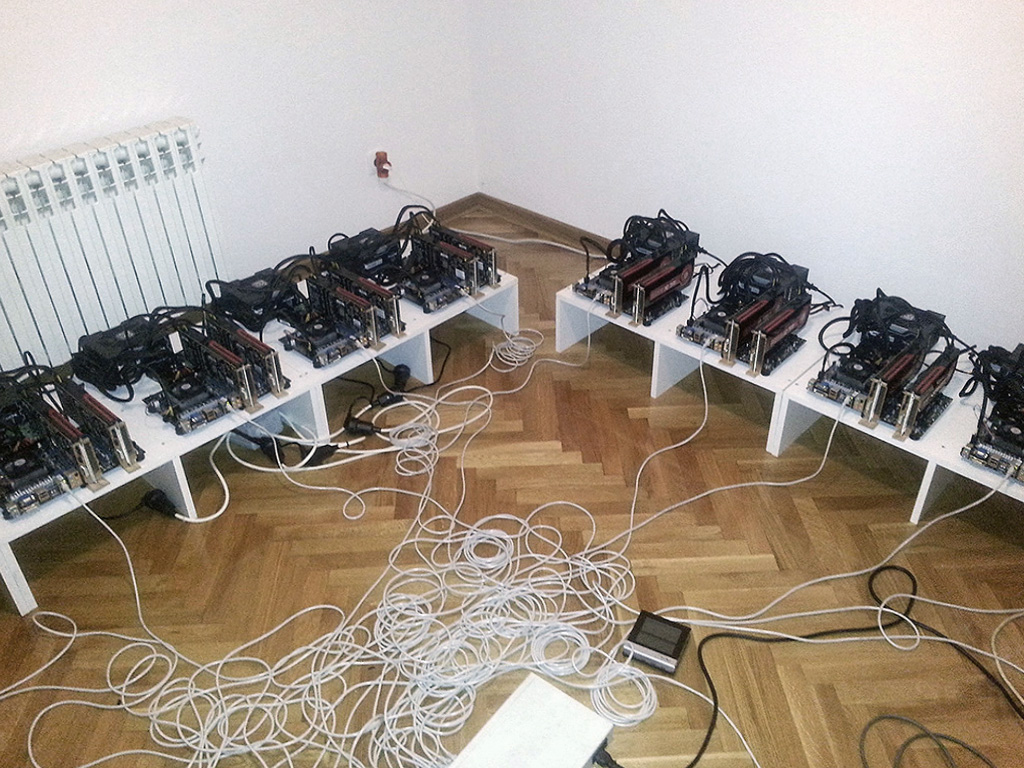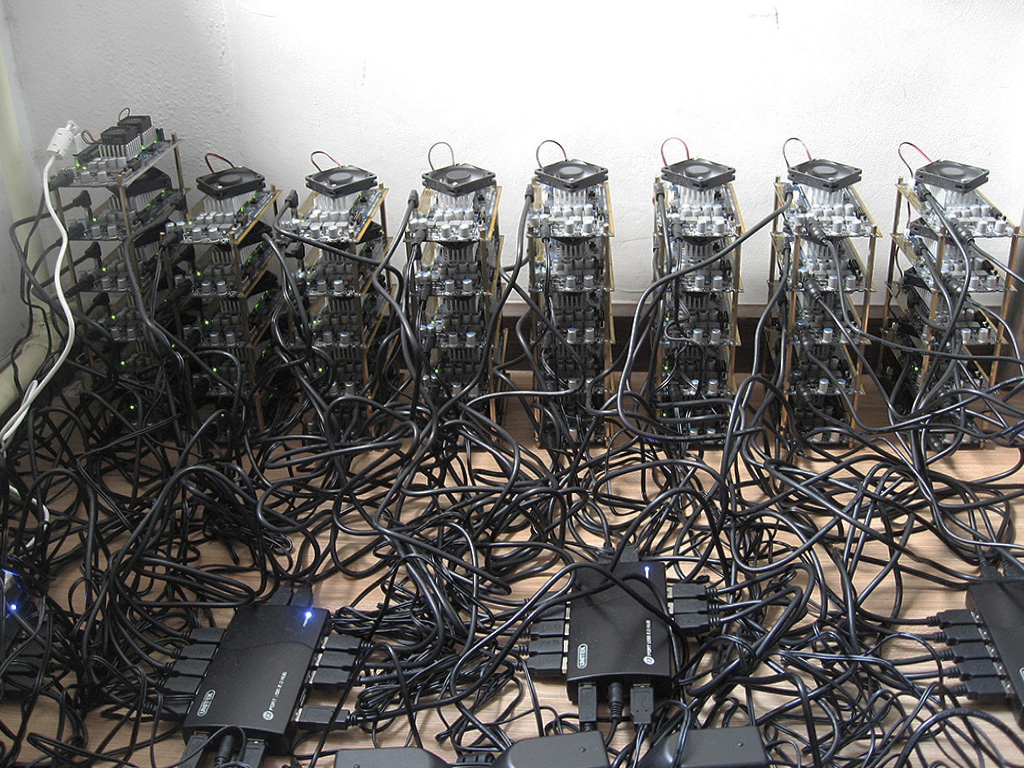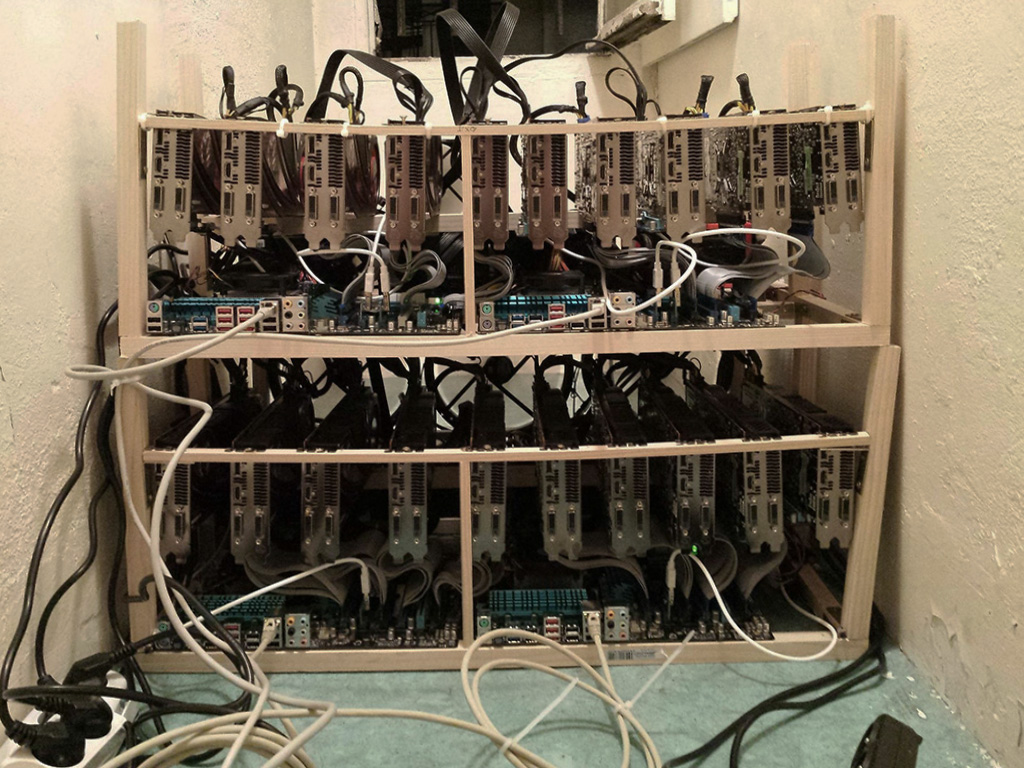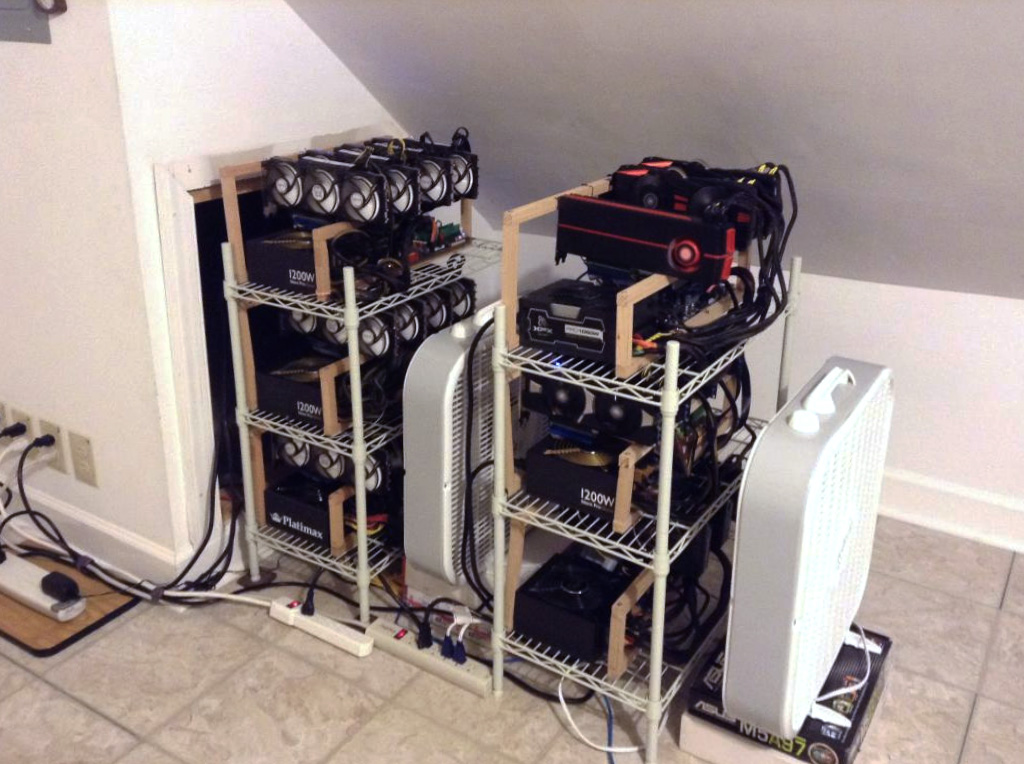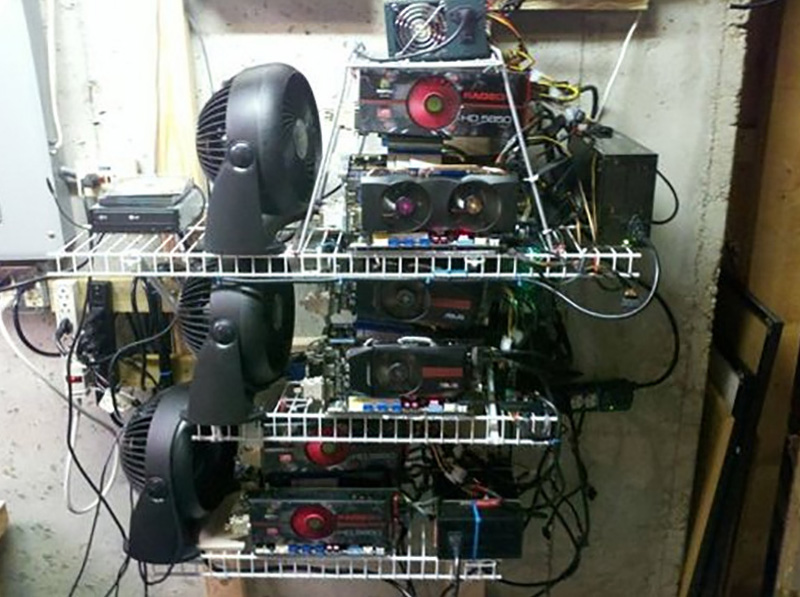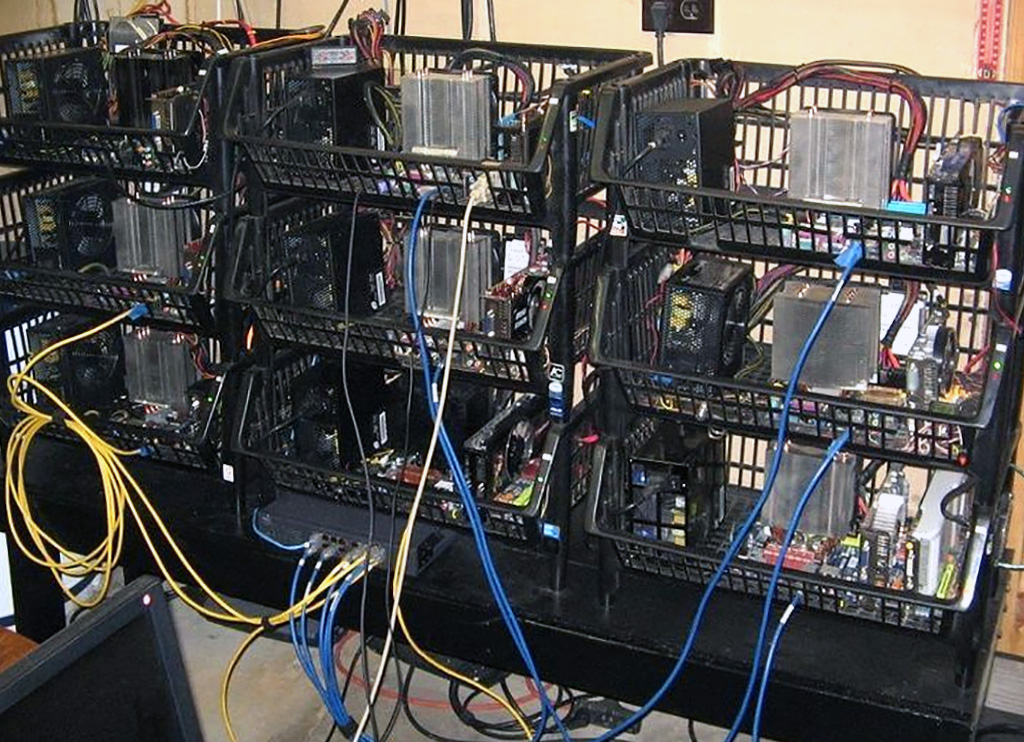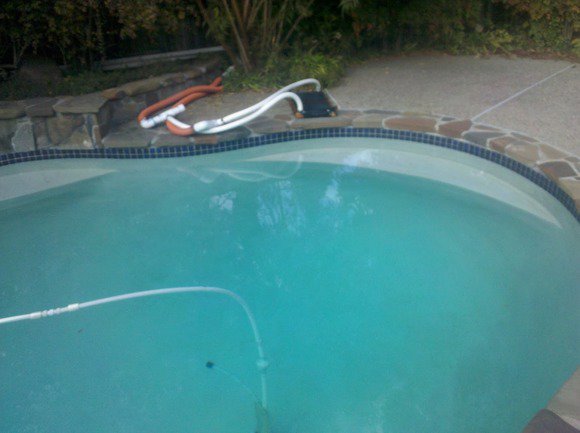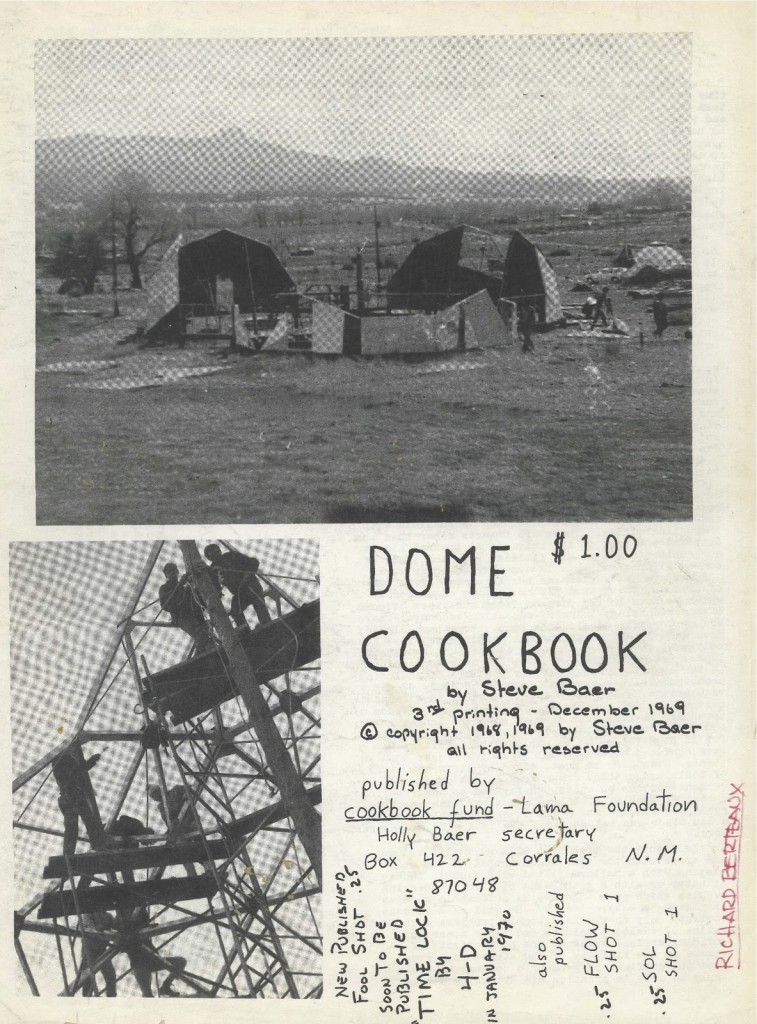The Home & Personal Data(-Mining) Center
Interestingly, when it comes to experimentation with hardware and The Cloud (or more generally with servers), the most interesting and almost crazy examples are made by the hobbyists and makers who are building and customizing their own data (Bitcoin) mining farms.
It happens in their houses, caves, bathrooms, bedrooms, closets, etc., it seems their are no limits to experimentation. A “house miner” even hacked his own swimming pool to cool down his servers (Portrait of a Bitcoin Miner, link below).
It is almost a subculture of home-brewed personal data-centers, built at home (or at the small office).
A few notable examples in pictures above (where we can verify that the questions of cooling and cables organization are for real…)
…
More insane rigs:
https://99bitcoins.com/20-insane-bitcoin-mining-rigs/
http://www.thinkcomputers.org/insane-crypto-currency-mining-rigs/
A portrait of “Eric”, a Bitcoin miner:
“Eric built a custom cooling system using water from his swimming pool.”
And more “mining rigs” of all sorts on Google Image…
The Home Data Center
For a fully configured and directly buyable personal cluster (21’000.- $, still), see also for example the Personal Cluster Model 1600 by Nor-Tech.
Reblog > The Home Data Center: Man Cave for the Internet Age
—–
By Rich Miller
In the ultimate manifestation of the “server hugger” who wants to be close to their equipment, a number of hobbyists and IT professionals have set up data centers in their home, creating server rooms in garages, basements and home offices.
The home data center is a novel extension of the central role that data centers now play in modern life. These enthusiasts are driven by a passion for IT, and use their gear for test-driving new equipment, lightweight web hosting or just as the ultimate technology ManCave.
Whatever the motivation, this level of connected house requires some adaptations, including upgrading power and network connections and running cable throughout a residential home.
Clouds on | rblg
All posts taged as “Cloud” on | rblg (not necessary relevant in our case as it also points out “atmospheric resources” –”real clouds” so to say…–)
Data tag on | rblg
All posts taged as “Data” on fabric | rblg, which acts as my survey & resources website.
Note about “Cookbooks”
“Cookbooks” will mostly consist of (technical) tips and advises in the form of “recipes” dedicated to designers, student-researchers and/or makers.
The main purpose of these guidelines will be to help the design community gain access to open cloud technologies and grasp the tools, so to develop their own projects. We’ll select a few of these technologies during our project and try to share what we’ll learn.
“Recipes” will also consist in descriptions about the ways to use libraries, APIs and/or other artifacts that will be developed or used in the context of this research project.
Any desire to build your own dome in the manner of Buckminster Fuller and start your commune? A “Dome Cookbook” in DIY mode by Steve Baer, directly coming out from the Drop City experience, Trinidad USA, 1969.
So to say, we simply envision the I&IC “Cookbooks” as an “Access to tools“ and as an obvious tribute to these historical references, so as the ones who followed.
It could lead to some kind of manual of best “open procedures” at the end of the research, or to some kind of kit.
